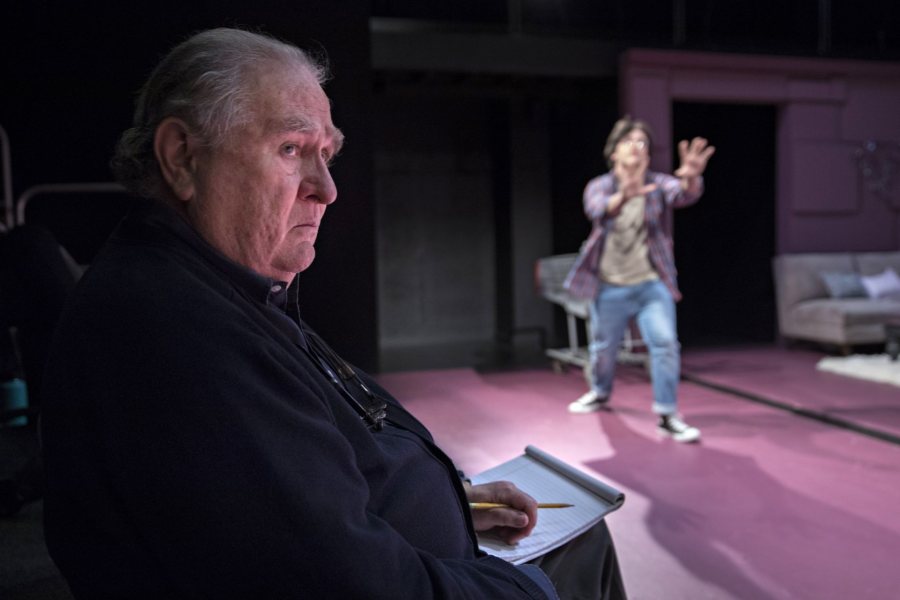
“Bittersweet” is how Bates theater professor Martin Andrucki characterizes the play he has chosen for the college’s autumn mainstage production.
While the laughs keep coming in Love/Sick, which was written by actor and playwright John Cariani and runs at Bates through Nov. 4, the underlying theme is that love really is a sickness, a malady of the heart with no known cure.
In a sense, says Andrucki, the play “is about disposability in relationships — there’s this sense of, you pick them up and you drop them. Everything is always on the verge of coming apart and ending.”
Cariani uses an unconventional narrative structure to drive the painful point home. It’s a tightly concentrated adaptation of dramatic unity: Where a conventional play unfolds over a span of time, the nine short plays that constitute Love/Sick depict scenarios that, we are meant to understand, are happening simultaneously.
Those vignettes begin with the collision of an “obsessive impulsive” couple in a big-box store. Later, Andrucki says, a woman gets dumped by her boyfriend via a singing telegram. “Then there are two guys who are interested in each other but can’t quite bring it off, and a couple on their wedding day and the man backs out.” And so on.
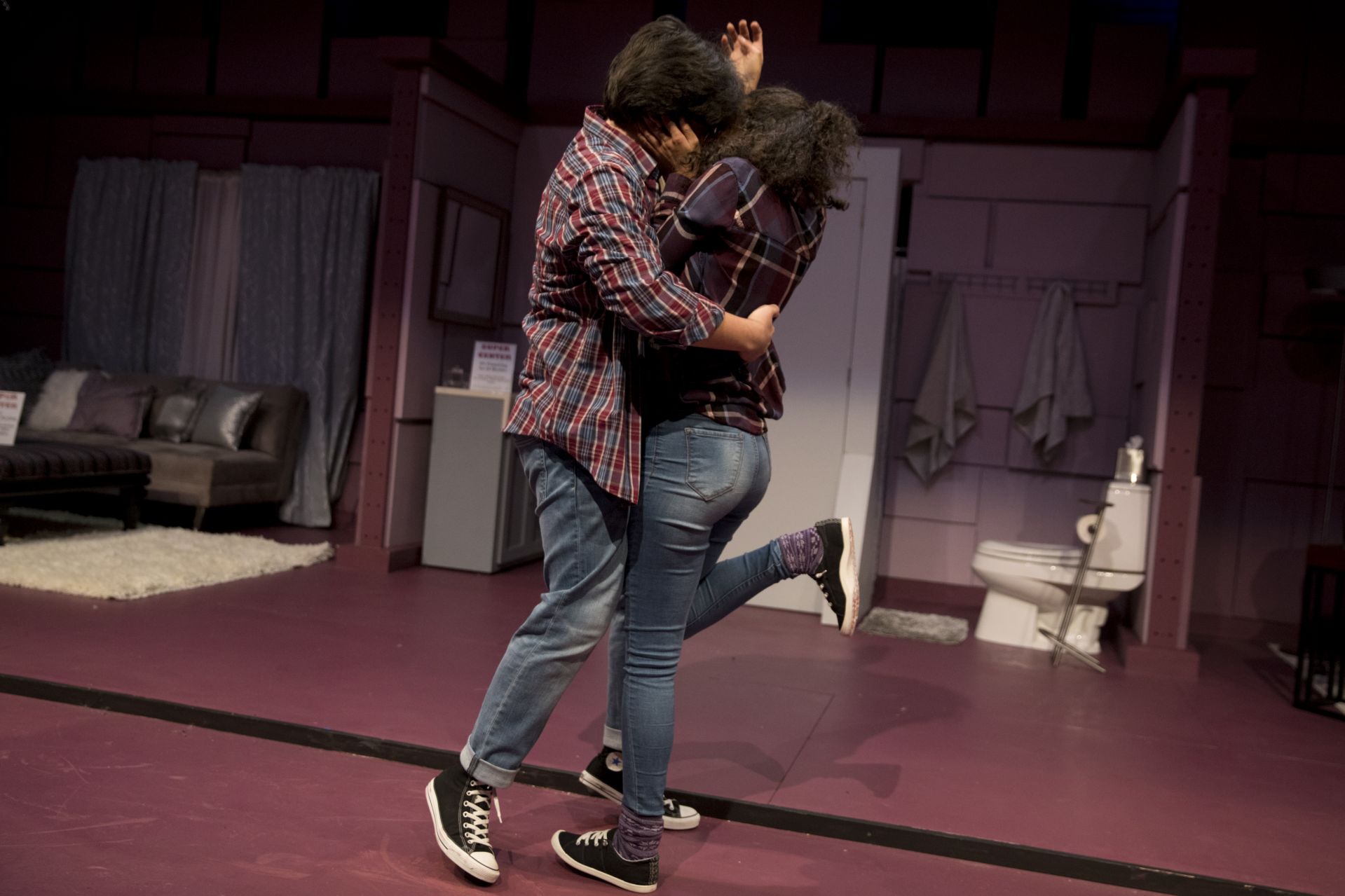
The characters played by Brady Chilson and Emily Diaz, both ’23, are strangers irresistibly drawn together at a big-box store. (Phyllis Graber Jensen/Bates College)
Not only that, but seven of the nine vignettes are set in different rooms of a single house, bookended by the episodes in the store. Similarly surprising, and ingenious, is the handling of character development, as each vignette features a couple who are a bit more experienced in romance (not to say successful) than those in the previous plotline. So the play’s emotional arc is cumulative, building across the experiences of 18 characters.
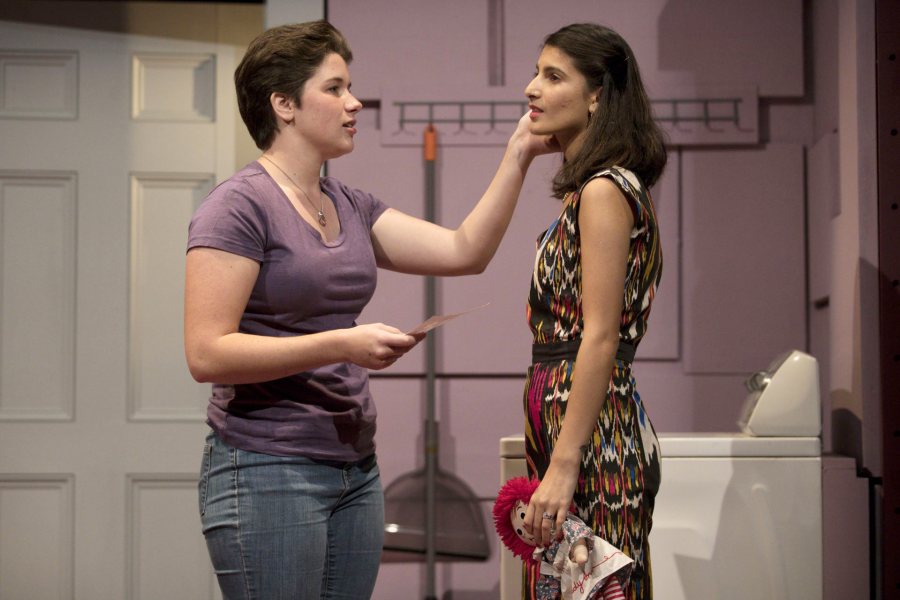
Muskan Verma ’21 plays Liz and Hale Murch ’22 is Abbie in Love/Sick. (Phyllis Graber Jensen/Bates College)
Raised in the northern Maine town of Presque Isle, Cariani has enjoyed an acting career that’s included five seasons on Law & Order, an Outer Critics Circle Award for his work in a 2004 Broadway revival of Fiddler on the Roof, and film roles alongside Robert De Niro, Christopher Walken, and Ed Asner.
But Cariani may be better-known in Maine for a playwriting career that, in addition to Love/Sick, includes his acclaimed debut, Almost, Maine. “The last time I checked, it was the most frequently performed play in American high schools, displacing A Midsummer Night’s Dream,” Andrucki says. “So in Cariani vs. Shakespeare, Cariani won.”
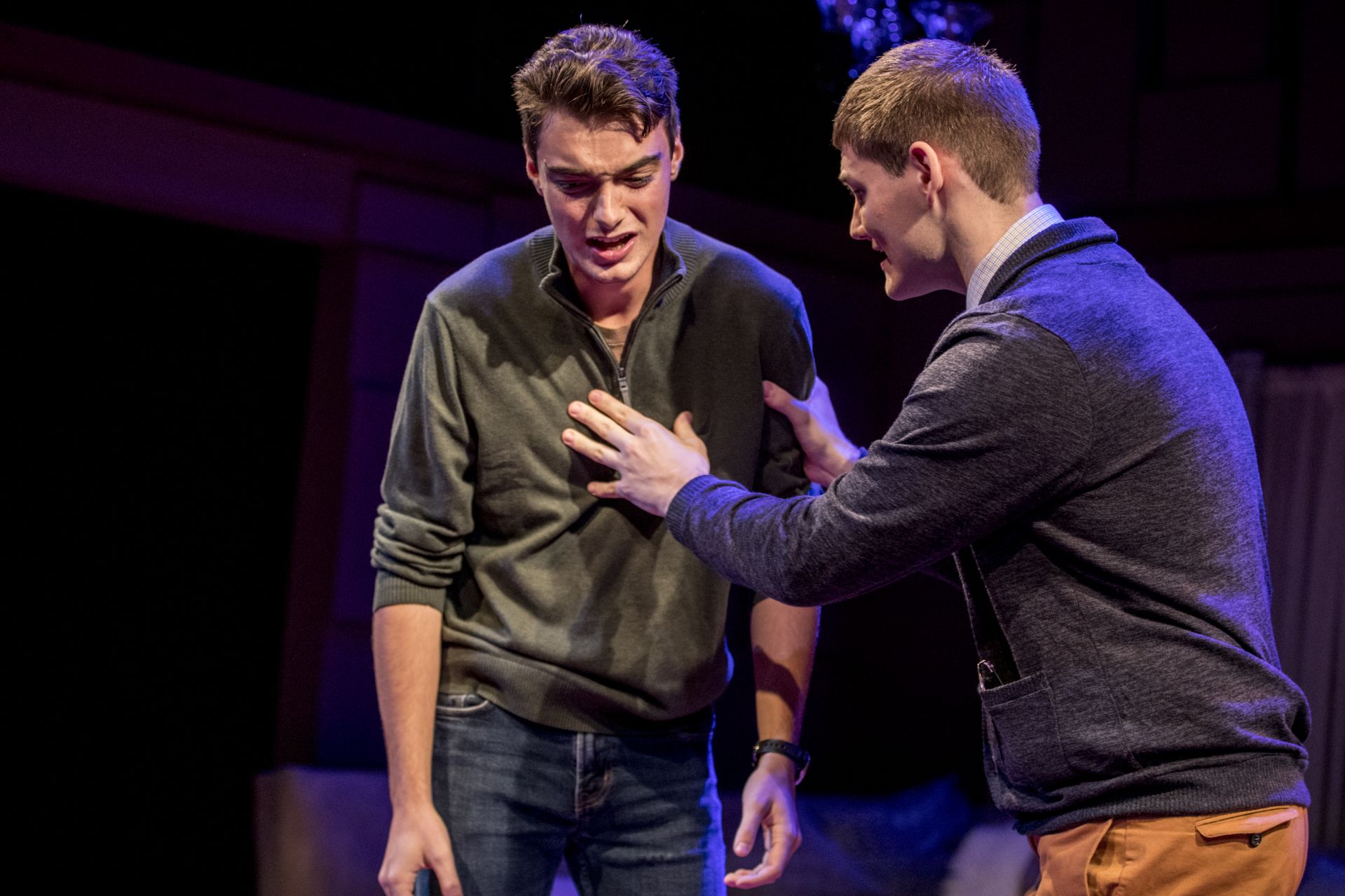
Noah Pott ’22 and Lucas Allen ’22 are shown in the segment titled “What?!?” (Phyllis Graber Jensen/Bates College)
Why did you choose Love/Sick?
A practical reason is that it’s a play subdivided into shorter plays, each one 10 to 12 minutes long, and each requiring two characters. So that gave opportunities for a whole bunch of students to perform that you might not get in a play with six characters, and there were a lot of kids chomping at the bit. They wanted to get involved, and so I got them involved.
How many students did you cast?
There are 12, with six of them playing two characters. And there’s never a time when the same two actors show up together, so there are some logistics to deal with there. And also you want to make sure the audience is not confused — “Is this the same couple that I saw before?” And no, it’s always different couples.
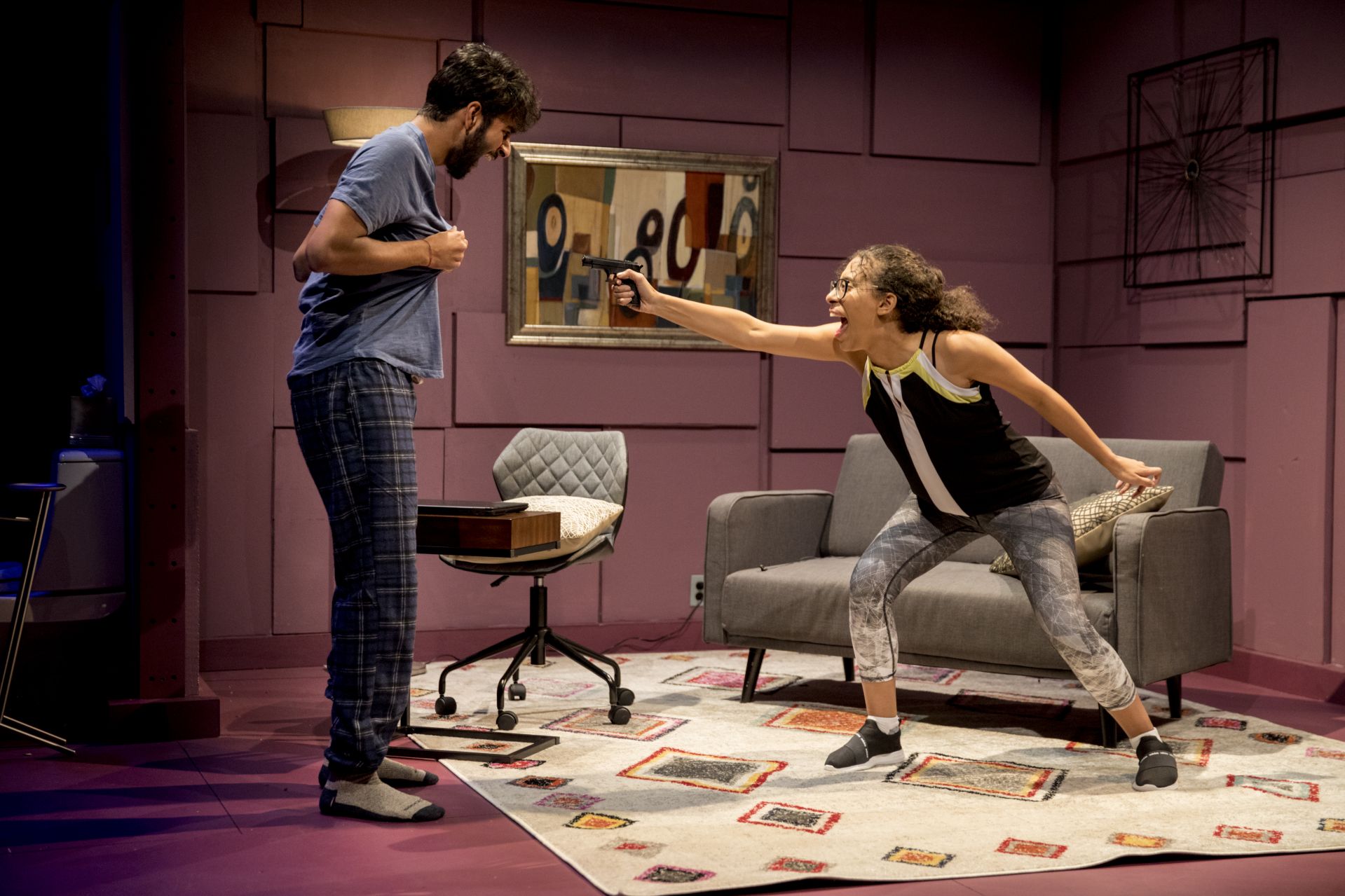
Sarah, played by Emily Diaz ’23, confronts Bill, played by Rishi Madnani ’23. (Phyllis Graber Jensen/Bates College)
What’s another reason you picked this play?
I liked the idea of a play that is not romantic about love. Kids who are 18 to 21 years old often have unrealistic ideas about love. And this play is quite cold-eyed in its view what love can often entail, which is a lot of pain, disappointment, and failure. So I thought it would be a useful exercise in a more mature perspective on what’s entailed by love.
As an actor, how is John Cariani as a playwright?
He’s got a very nice knack, and I’d like to expose students to his particular kind of dramaturgical skill.
You take a little play that’s 11 minutes long, you’ve got to get the job done economically. You’ve got to have all the elements in place — beginning, middle, and end, recognition and reversal, crisis, climax. All those things have to be there in a very compact setting.
It’s a little bit like making jewelry, and he does that nine times in the course of assembling short plays into a longer play. Students get to see how these nine plays actually add up to an overarching narrative.
Cariani writes with an understanding of what it means to take a pause. He writes the pauses in, provides you with scoring, the kind of scoring that an actor can read, the way a musician reads notes. So that’s all there quite explicitly in the text. And he also writes like an actor, because actors like big moments, and each little play has a nice big moment.
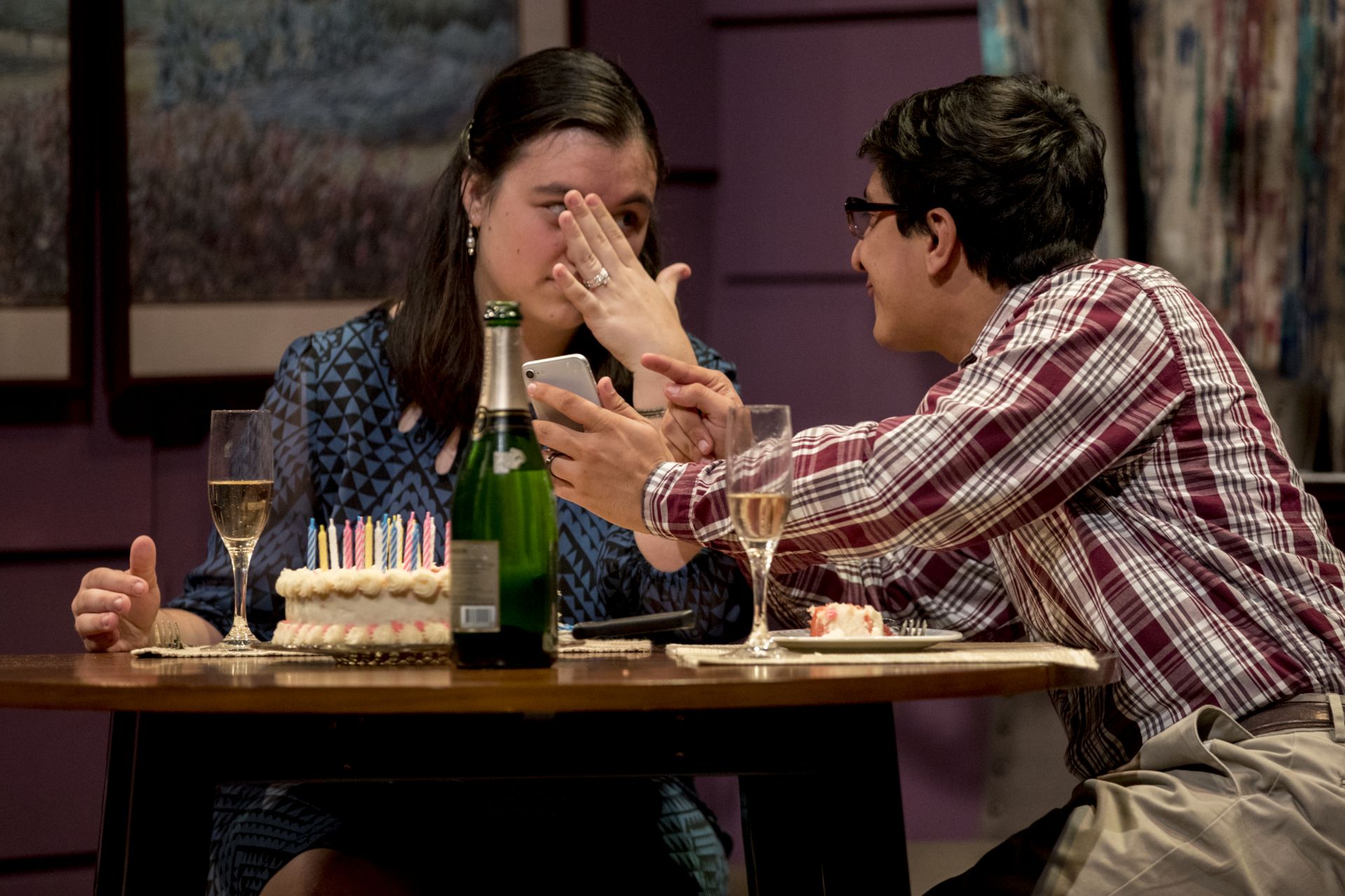
In the vignette “Forgot,” “Jill” (Olivia Dimond ’22) mourns the child she never had with “Kevin” (Kush Sharma ’23). (Phyllis Graber Jensen/Bates College)
What’s challenging about directing nine short plays, as opposed to one longer one?
When you’re working with five or six actors, you say, “Okay, you’ve got to get it right in the first act.” Then from that, they learn to get it right in the second act, so I don’t have to [work with them] for every single strophe of the play. It’s different when you’re working with 12 actors in nine short little plays.
The opening and closing vignettes take place in the same location, but that still leaves seven different rooms in a house that you have to show. How are you and designer Christine McDowell managing that?
Everything is in place on stage, and we’re treating the locations like model rooms in an Ikea store. The play begins and ends in an Ikea-like store, and each vignette mentions that store. One person has bought a gun there. Another person has rented a movie there. We also learn that the store runs a singing telegram operation.
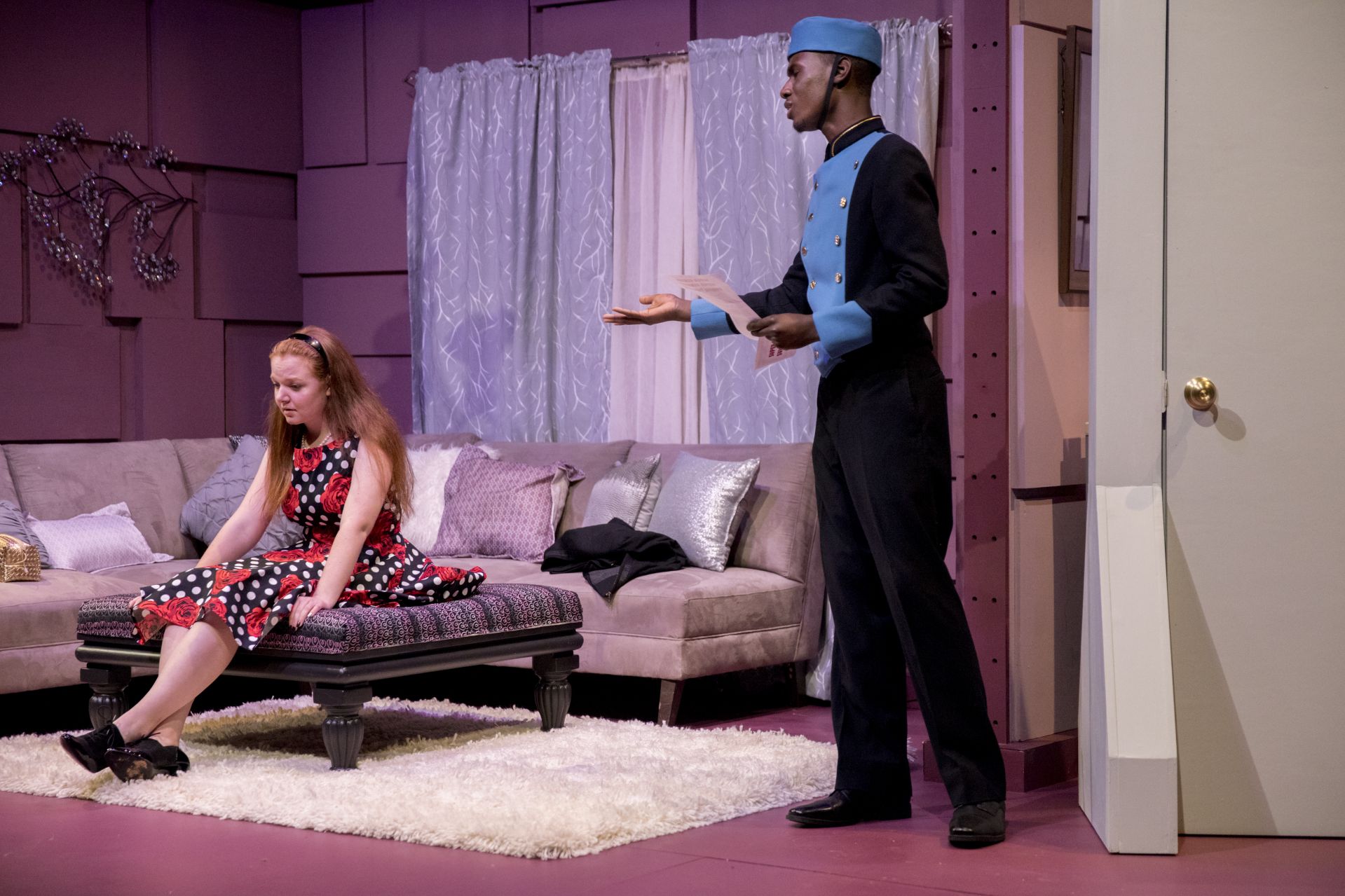
The singing telegram delivered by Losseni Barry ’22 is not what the recipient, played by Alex Gilbertson ’22, expected to hear. (Phyllis Graber Jensen/Bates College)
That’s some store. What’s the big-box store motif telling us?
It’s about disposability in relationships — there’s this sense of, you pick them up and you drop them. Everything is always on the verge of coming apart and ending. The way the thing you buy breaks.
Sounds bleak!
Well, it’s kind of funny. It’s bittersweet without being bleak, I guess. It’s easy to understand and to relate to — everybody has had some kind of heartbreak, I think. And everybody enjoys rueful laughter.
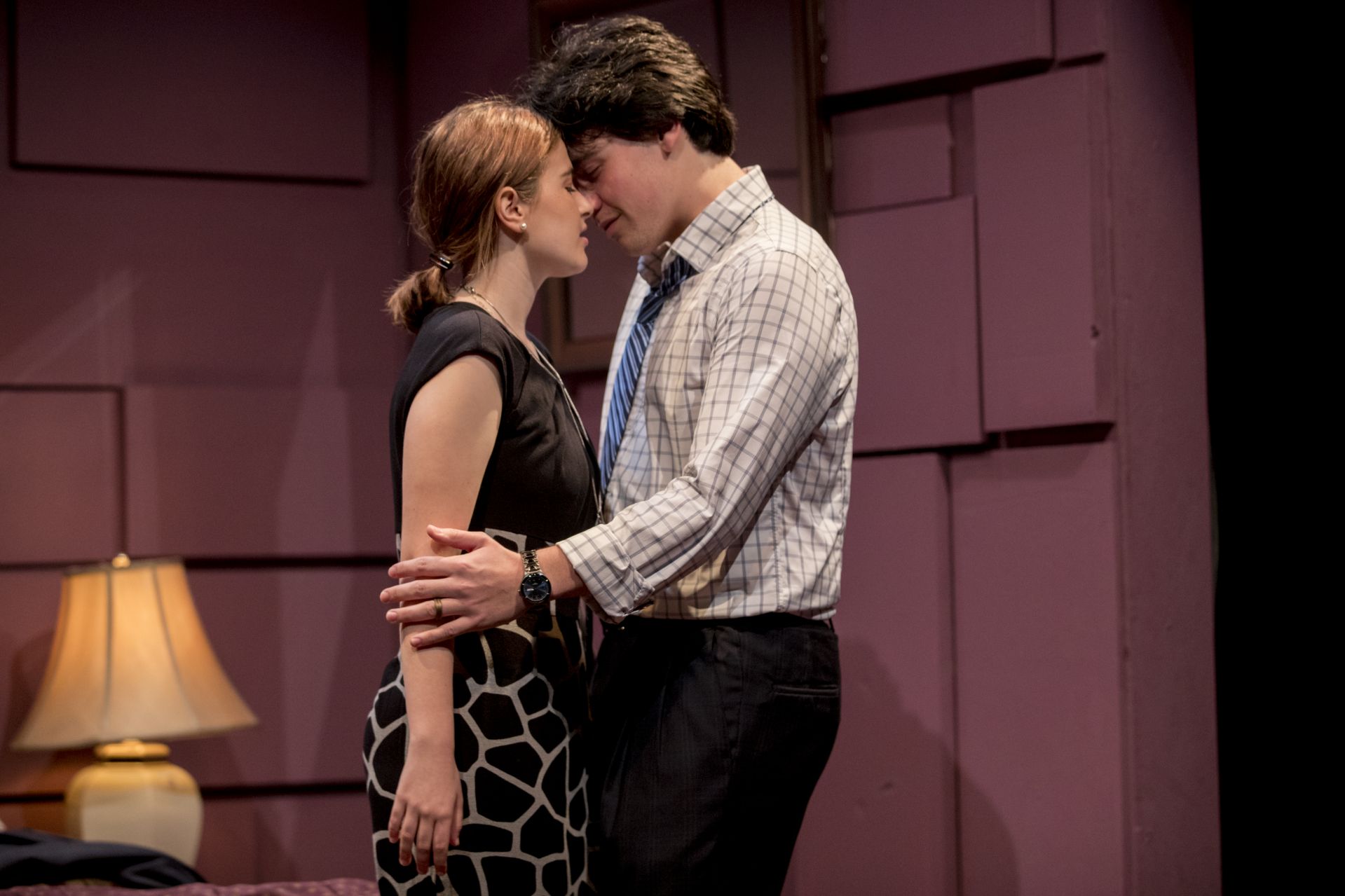
Love/Sick vignette "Lunch and Dinner," Mark (Brady Chilson ’23) and Kelly (Sadie Basila ’23) reveal that their appetites have strayed. (Phyllis Graber Jensen/Bates College)” width=”1919″ height=”1279″>
In the Love/Sick vignette “Lunch and Dinner,” characters played by Brady Chilson ’23 and Sadie Basila ’23 reveal that their appetites have strayed. (Phyllis Graber Jensen/Bates College)